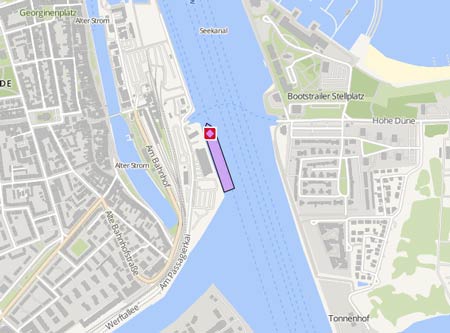NVIN
Kurs/Position
Die letzten Häfen
Die letzten Wegpunkte
Die neuesten Nachrichten
Plane crash was pilot error
A Navy investigation was placing blame on a mistake by a pilot for causing the crash of an F-35C Lightning II fighter jet aboard the USS 'Carl Vinson' in the South China Sea on Jan. 24, 2022. The crash injured the pilot, as well as five sailors on the carrier's flight deck. It also caused millions of dollars in damage to another plane and hundreds of thousands of dollars in damage to the deck of the carrier. The report said that the pilot, identified only by his rank of lieutenant, wanted to try an "expedited recovery maneuver" that naval aviators know as the "Sierra Hotel Break" or SHB. The report describes it as "when an aircraft initiates a turn to downwind from either behind the ship or over the top of the ship … [using] G-forces to decelerate over the course of a 360-degree turn, dropping the landing gear when the aircraft is below landing gear transition speed." The report notes that the move means "a pilot has a reduced amount of time to configure the aircraft and conduct landing checks." The pilot in this incident "wanted to try a 'benign first attempt' at breaking overhead the ship" and told others in his squadron that, since other junior officers had performed the maneuver, "he wanted to attempt it before the end of deployment." As the nearly four-hour flight came to an end, the pilot began maneuvers to execute the break. However, the report notes that he didn't get a chance to finish the landing checklist, the report said. Crucially, the lieutenant reportedly didn't turn on the Approach Power Compensation Mode (APC), which maintains the jet at the right angle, or the Delta Flight Path (DFP), which automatically adjusts the throttle. As a result, the investigation found that, while the pilot was making the right corrections in the cockpit, "these corrections did not engage the engine to provide additional thrust." Just shy of 90 seconds after the plane began its break maneuver, the landing signals officer aboard the carrier told the pilot his speed was too low. A second later, they were waiving the pilot off the landing and repeatedly telling him to hit the afterburners. The plane struck the rear of the 'Carl Vinso'n four seconds after those orders went out. According to the report, the plane hit the carrier's ramp with its belly, shearing off the main landing gear. Then, a missile bracket on the plane's wing caught one of the landing wires on the carrier's deck, sending the jet into a spin. Investigators said that this was a fortunate turn of events for those on the flight deck since the snag and spin "likely kept the [aircraft] fuselage wreckage from impacting other personnel, ground equipment and aircraft parked on the four row [sic] of CVN 70's bow." The pilot ejected before the plane careened off the side of the ship and into the South China Sea. The entire incident took about five minutes. Four minutes later, the pilot landed in the water, where he was recovered by a rescue helicopter. The report notes that on deck, crews sprang into action, dousing bits of the wreckage with firefighting foam and responding to injuries. At least one of the injured sailors was on the platform where the landing signals officers sit. Ultimately, in addition to the pilot, a lieutenant commander, a chief petty officer, a petty officer first class and two airmen were injured in the mishap. Three sailors had to be evacuated ashore; The damage the plane caused was significant. A nearby EA-18G Growler was showered with debris that damaged its radome, several control surfaces and fuselage. The report concluded that the repair cost would "likely cross the $2.5 million threshold of a class A aviation mishap." The crash also meant flight crews had to replace all the arresting wires on the flight deck right away, and the ship was left with several gouges and scrapes. Investigators said the repairs to the flight deck alone would likely cost around $120,000, and the sum of all the damage to the carrier was probably not more than $600,000. The plane, which sank into the ocean, was eventually salvaged by the Navy in March 2022. The plane -- which cost $115,395,938 -- was a loss. "Multiple weeks of saltwater intrusion at depth will likely result in the lack of salvage potential for any aircraft components," the report said. Before the incident, the pilot -- a junior officer who had logged 650 flight hours, 370 of them in the F-35C -- was judged as "exceptional for a first-tour junior officer," the report said. It noted that the lieutenant won the "Top-5 Nugget and a Top-10 ball-flyer" awards within his air wing. "It is the opinion of this board that pilot error was the cause of the mishap," the report noted. "However, the error was not conducted in a reckless manner nor with malicious intent. The pilot is no longer in a flying status in the U.S. Navy, but will continue to serve as a Naval officer." Investigators also issued a series of recommendations to prevent further incidents. Those included the change to always use Approach Power Compensation Mode (APC)/Delta Flight Path (DFP) throttle assists and that head-up displays inside the cockpit include indicator lights showing when the two flight aids are on. However, the report specifically says that the Navy is not recommending an end to expedited recovery maneuvers or SHBs.
News schreiben


